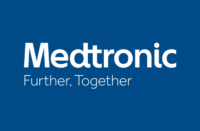DIAMOND BAR, California, March 22, 2017 /PRNewswire/ — Biosense Webster, a Division of Johnson & Johnson Medical NV/SA, a worldwide leader in the diagnosis and treatment of cardiac arrhythmias, announced today the launch of the CARTO VISITAG™ Module with Ablation Index, a new technology providing visual indication based on the integration of power, contact force and time parameters to be displayed on the market-leading CARTO® 3 System. This index was developed to simplify and standardize the workflow for ablating patients with Paroxysmal Atrial Fibrillation (PAF) and support electrophysiologists using the CARTO SMARTTOUCH™ Technology, in reproducing their own successful ablation strategy to achieve Pulmonary Vein Isolation (PVI).
Atrial Fibrillation affects 2% of the entire population and can increase a patient’s risk of stroke five-fold1, making it one of the world’s most significant public health issues. Estimates indicate that, by 2030, the number of patients with Atrial Fibrillation in Europe will be between 14–17 million with 120,000–215,000 new cases per year1.
“Biosense Webster is committed to helping physicians restore a patient’s regular heart rhythm, so they can enjoy a more normal life,” said Gabriele Fischetto, Vice President of Johnson & Johnson Cardiovascular Solutions in EMEA. “Due to aging populations and increasing rates of non-communicable diseases – the prevalence of Atrial Fibrillation is rising and our mission is to deliver breakthrough innovations such as the CARTO VISITAG™ Module with Ablation Index, in order to standardize and simplify Atrial Fibrillation procedures and ultimately help cure this debilitating disease.”
During the catheter ablation treatment of Atrial Fibrillation, lesion formation depends on many factors including catheter stability, power, contact force and time, and physicians monitor all of these parameters simultaneously throughout a procedure. The CARTO VISITAG™ Module with Ablation Index integrates power, contact force and time into one single value (weighted formula) when the catheter is stable.
“Compared to my previous ablation strategy, thanks to the new CARTO VISITAG™ Module with Ablation Index, I have reduced my procedural time by 26% and radiofrequency ablation time by 36% in PAF ablation. Furthermore, in my experience with the Ablation Index combined to an optimized workflow, the success rate at 1 year follow-up (single-procedure freedom of documented arrhythmia) is now up to 92%” said Prof M. Duytschaever, MD, Heart Division Az Sint-Jan Hospital, Bruges, Belgium. “I strongly believe that the information the Ablation Index gives me will further increase acute and long-term durability finally closing the gap to durable PVI.”
Seamlessly integrated into the CARTO VISITAG™ Module in CARTO® 3 Version 4, this new software is accompanied by a standard workflow for PVI. The Ablation Index assists physicians in reproducing their successful ablation strategy, while continuing to monitor standard ablation end-point indications.
REFERENCES
[1] Zoni-Berisso M., L. C. D. (2014). Epidemiology of atrial fibrillation: European perspective. Clinical Epidemiology 2014:6:213-220.
Disclaimer: The CARTO VISITAG™ Module provides access to data collected during the application of RF energy. The data does not indicate the effectiveness of RF energy application. CARTO VISITAG™ Module settings are user defined based on the user’s clinical experience and medical judgment. Biosense Webster does not recommend any settings for the CARTO VISITAG™ Module. Always verify catheter tip location using fluoroscopy or IC signals and consult the CARTO® System User Guide regarding recommendations for fluoroscopy use. Sporton S, Earley M, Nathan A, and Schilling R, Electroanatomic versus fluoroscopic mapping for catheter ablation procedures: A prospective randomized study. Journal of Cardiovascular Electrophysiology 2004;15,3:310-315. Catheter advancement should be done under fluoroscopic guidance. Do not use excessive force to advance or withdraw the catheter when resistance is encountered. Careful catheter manipulation must be performed in order to avoid cardiac damage, perforation, or tamponade. RF parameters you may find in this session provide conceptual information that does not intent to reflect parameters used in clinical practice (such as Power, impedance, temperature, contact force). The Ablation Index tool is not intended to replace current practice of clinical judgment for RF application and the physician, using this tool, is required to follow the recommended clinical guidelines including monitoring changes
About Biosense Webster’s CARTO® 3 System
The CARTO® 3 System is an advanced imaging technology that utilizes electromagnetic technology to create real-time 3D maps of a patient’s cardiac structures. The system is designed to help electrophysiologists navigate the heart by generating an accurate 3D map, as well as pinpointing the exact location and orientation of catheters in the heart during catheter ablation procedures for patients suffering from heart rhythm conditions (cardiac arrhythmias). During catheter ablation, doctors insert a therapeutic catheter through a small incision in the groin where it is then weaved up to the heart through a blood vessel. Once it reaches the left upper chamber of the heart (atrium), radiofrequency energy is delivered to the heart wall to create lesions that block faulty electrical impulses that can cause heart rhythm disorders.
About Biosense Webster
Biosense Webster is a global leader in the science of diagnosing and treating heart rhythm disorders. The company partners with clinicians to develop innovative technologies that improve the quality of care for arrhythmia patients worldwide. Biosense Webster is part of the Johnson & Johnson Family of Companies. More information can be found at www.biosensewebster.com.
Cautions Concerning Forward-Looking Statements
This press release contains “forward-looking statements” as defined in the Private Securities Litigation Reform Act of 1995 regarding the CARTO® 3 System CARTO VISITAG™ Module with Ablation Index. The reader is cautioned not to rely on these forward-looking statements. These statements are based on current expectations of future events. If underlying assumptions prove inaccurate or known or unknown risks or uncertainties materialize, actual results could vary materially from the expectations and projections of Biosense Webster, Inc. and/or Johnson & Johnson. Risks and uncertainties include, but are not limited to: uncertainty of commercial success; competition, including technological advances, new products and patents attained by competitors; challenges to patents; product efficacy or safety concerns resulting in product recalls or regulatory action; changes in behavior and spending patterns or financial distress of purchasers of health care products and services; changes to applicable laws and regulations, including global health care reforms; manufacturing difficulties and delays; and trends toward health care cost containment. A further list and description of these risks, uncertainties and other factors can be found in Johnson & Johnson’s Annual Report on Form 10-K for the fiscal year ended December 28, 2014, including in Exhibit 99 thereto, and the company’s subsequent filings with the Securities and Exchange Commission. Copies of these filings are available online at www.sec.gov, www.jnj.com or on request from Johnson & Johnson. Neither Biosense Webster nor Johnson & Johnson undertakes to update any forward-looking statement as a result of new information or future events or development.
© Johnson and Johnson Medical NV/SA 2017 – 068266-170302 EMEA
SOURCE Biosense Webster






